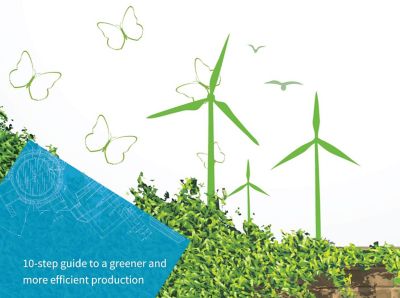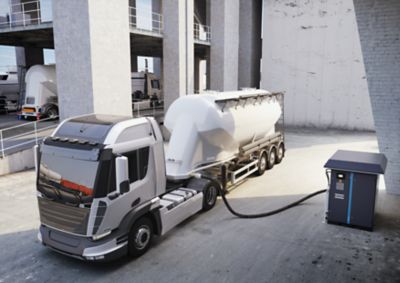Razumevanje meritev kompresorja: delo, moč in pretok
Ko spoznate osnove fizike, boste morda želeli izvedeti več o razumevanju meritev kompresorja glede snovi.
Te informacije so zelo uporabne za določanje ustrezne velikosti in moči, ki ju potrebujete za določen način uporabe. V tem članku bomo pojasnili osnove merjenja dela, moči in prostorninskega pretoka.
Kako se meri mehansko delo
Mehansko delo je mogoče opredeliti kot produkt sile in razdalje, preko katere sila deluje na predmet. Tako kot toplota tudi delo vključuje prenos energije iz enega telesa v drugo. Razlika je v tem, da gre za silo in ne za temperaturo. Primer tega je, ko je plin v jeklenki s premikajočim se batom komprimiran.
Kompresija nastane zaradi sile, ki premika bat. Energija se zato prenaša z bata na plin. Ta prenos energije je delo v termodinamičnem smislu besede. Rezultat dela ima lahko številne oblike, kot so spremembe potenciala, kinetične ali toplotne energije.
Mehansko delo, povezano s spremembami volumna plinske mešanice, je eden najpomembnejših postopkov v inženirski termodinamiki.
Enota SI za delo je Joule: 1 J = 1 Nm = 1 Ws.
Merjenje moči
Moč je opravljeno delo na enoto časa. Je merilo, kako hitro je delo končano.
Enota SI za moč je vat: 1 W = 1 J/s.
Na primer, pretok moči ali energije na pogonsko gred kompresorja je numerično podoben emisijam toplote sistema, plus toplota, ki se dovaja v komprimiran plin.
Merjenje hitrosti pretoka
Pretoki kompresorja se običajno merijo z merilnikom masnega pretoka. Intuitivno je lažje razumeti hitrost pretoka plina v smislu volumna kot mase. Zaznana pomanjkljivost tega je lahko, da je nato treba določiti pogoje vstopa plina, saj se bo volumen spreminjal s spreminjajočimi se pogoji vstopa. Vendar pa bo pri kompresorju izhodni masni pretok odvisen tudi od vhodnih pogojev, kar pomeni, da je treba vedno določiti vhodne pogoje, v katerih je bil dosežen pretok.
S prostorninskim pretokom sistema se izraža prostornina tekočine, ki teče na enoto časa. Lahko se izračuna kot produkt površine prereza pretoka in povprečne hitrosti pretoka. Enota SI za prostorninski pretok je m3/s.
Vendar pa boste pri nakupu kompresorja običajno našli zmogljivost kompresorja, izraženo v litrih/sekundo (l/s). To je FAD ali prost pretok zraka kompresorja.
Prost pretok zraka (FAD)
Kaj je prost pretok zraka? Prost zrak pomeni zrak v pogojih vstopa kompresorja, torej pri temperaturi in tlaku okolja. Dobava pomeni, da se upošteva samo zrak, ki prihaja iz izhoda kompresorja. To se razlikuje od zraka, ki vstopa na vhodu, saj lahko nekaj zraka uhaja iz kompresorja med vhodom in izhodom. Pretok kompresorja se običajno meri z merilnikom masnega pretoka na izhodu. To pomeni, da se meri samo dovedeni zrak. Nato se s pomočjo vhodnih pogojev pretvori v »prost zrak«.
FAD se uporablja za primerjavo med različnimi kompresorji ali za ujemanje zmogljivosti kompresorja s porabo orodij. Če ni navedeno drugače, je bil FAD kompresorja ali orodja - ki ga najdete na njihovih tehničnih listih - izmerjen ob vzdrževanju referenčnih vhodnih pogojev (20 °C, 1 bar in 0 % relativne vlažnosti). Masa zraka, ki se prilega gibni prostornini kompresorskega elementa, se spreminja z gostoto zraka in s tem spreminja količino pretoka, ki se učinkovito doseže na izhodni strani kompresorja. Gostota je odvisna od temperature in tlaka zraka. Zato je izmerjeni izhodni masni pretok deljen z gostoto vhodnega zraka. Učinek gostote je tako odpravljen.
Vendar pa obstajajo stranski učinki temperature in tlaka. Velikost vrzeli med deli se bo med drugim spreminjala glede na temperaturo, kar bo povzročilo večje ali manjše puščanje. Sprememba tlaka na vhodu bo povzročila tudi prekomerno ali nezadostno kompresijo, kar bo spremenilo nastalo hitrost izhodnega pretoka. Zato je pomembno, da primerjate kompresorje pod enakimi pogoji, ki so na splošno (vendar ne nujno) referenčni pogoji, določeni v standardu ISO 1217:2009. V drugih sektorjih ali regijah lahko uporabite različne referenčne pogoje.
Druga pogosto uporabljena hitrost pretoka je normalna hitrost pretoka (Nl/s), kjer je referenca pri 0 °C, 1 atm in 0 % RH.
Razmerje med dvema volumskima pretokoma je qFAD = qN × T FAD / TN × PN / P FAD
(Upoštevajte, da zgornja poenostavljena formula ne upošteva vlažnosti.)
kjer je:
q FAD = prost pretok zraka (FAD) v l/s (dejanski pretok pri izhodnih pogojih)
qN = normalna hitrost pretoka v Nl/s (hitrost pretoka pri standardnih pogojih)
T FAD = standardna vhodna temperatura (20 °C/68 °F)
TN = normalna referenčna temperatura (0 °C/32 °F)
PN = normalni referenčni tlak (1,013 bar(a)/101,3 kPa)
P FAD = standardni vhodni tlak (1,00 bar(a)/1,00 kPa)
- qFAD odraža dejanske delovne pogoje, pri čemer upošteva tlak in temperaturo, pri katerih zrak izstopa iz kompresorja.
- qN zagotavlja standardizirano referenco, kar olajša primerjavo zmogljivosti kompresorja med različnimi sistemi.
Inženirji in industrijski kupci se za primerjavo zanašajo na qN, medtem ko je qFAD ključnega pomena za dejansko zasnovo in delovanje sistema.
Čeprav se zdi, da gre za prostorninski pretok, lahko FAD razumemo kot masovni pretok, izražen v prostornini. To je zato, ker je pri fiksnih pogojih gostota zračnega pretoka konstantna, zato je masni pretok konstanten in znan.
Naslednji primer prikazuje prost pretok zraka (FAD):
- Kaj pomeni FAD 39 l/s za kompresor, ki deluje pri 10 barih (e)?
- Kako dolgo traja polnjenje 39-litrskega rezervoarja pri tlaku 10 barov?
FAD lahko vidimo kot masovni pretok. Skupna masa 39 l zraka pri 10 bar(e) ali 11 bar(a) je enaka enajstkratni masi 39 l zraka v pogojih okolice. Slednjo lahko imenujemo enota mase. Ob predpostavki, da je rezervoar že na začetku napolnjen z zrakom iz okolice, je v njem že ena »enota mase« in potrebujemo le še 10 dodatnih. Ker vemo, da kompresor dovaja eno enoto mase na sekundo, potrebujemo 10 sekund za dovajanje te mase v rezervoar.
Tukajje razlaga razlike med barom(a) in barom(e).
Specifične energijske zahteve (SER)
SER je merilo učinkovitosti, izraženo kot količina energije, ki je potrebna za dovajanje 1 litra FAD pri določenem tlaku. To daje vrednost v joulih/liter (J/l). Na primer, stroj, ki porabi 35 kW za dovajanje 100 l/s, ima SER 350 J/l.
"Osredotočenost na pretok pri meritvah kompresorja
Določanje vašega sistema komprimanega zraka po pretoku in tlaku - ne po kW ali KM - je najboljši način za prilagoditev njegove zmogljivosti vašim potrebam. Velikost kompresorja se mora bolj natančno ujemati z vašimi poslovnimi zahtevami kot samo z nazivno močjo v kW.
Nakup opreme ustrezne velikosti
V tem članku je uporabljenih veliko tehničnih izrazov v zvezi z mehanskim delom, močjo in pretokom. Razumevanje teh informacij je pomembno, da boste lahko izbrali pravo opremo, ki ustreza vašemu načinu uporabe. Če kupite predimenzionirano ali poddimenzionirano opremo, obstaja tveganje neučinkovitosti.
Pomembno je, da razmislite o tem, koliko sile boste potrebovali, da premaknete predmet in opravite dano delo v danem časovnem okviru. Kot je navedeno zgoraj, se to izraža s pretokom in tlakom. Poleg litrov na sekundo (l/s) se pretok meri v kubičnih čevljih na minuto (cfm) ali kubičnih metrih na uro (m3/h). Vse te meritve se nanašajo na hitrost.
Tlak je prikazan v zgoraj omenjenih barih ali funtih na kvadratni palec (psi). Če morate premikati težke predmete, boste potrebovali več pritiska. Prav tako boste želeli ugotoviti, ali potrebujete celodnevno oskrbo z zrakom in ali obstajajo različne zahteve za vaše aplikacije. Ta kontekst je uporaben pri določanju velikosti in izbiri med stroji s fiksno hitrostjo in pogoni s spremenljivo hitrostjo (VSD). Oglejte si naš vodnik za izbiro kompresorja.
Povezani članki
4 avgust, 2022
Za razumevanje delovanja stisnjenega zraka lahko veliko pripomorejo osnove fizike. Opredelili bomo različne fizikalne enote za merjenje tlaka, temperature in toplotne zmogljivosti. Izvedite več.
20 februar, 2025
Za razumevanje delovanja stisnjenega zraka je koristno poznati osnove fizike, ki vključujejo štiri agregatna stanja snovi.
21 april, 2022
Za boljše razumevanje fizike termodinamike kompresorjev in pridobivanja toplote so v tem članku predstavljena glavna načela in dva plinska zakona.

